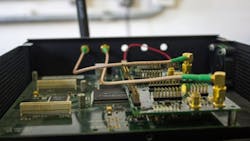Buying Trends: Connector Market Update
Used to join circuit subsections together, connectors play an important role in creating flexible electronic circuits that at some point can be disconnected and replaced or re-routed. In 2014, the connector industry grew to almost $53 billion, making it one of the most profitable subsections of the electronic components industry, according to TTI’s Facts and Figures: 10 Years of Connector Industry Income Statement.
“Connector companies are very profitable, highly sought-after acquisition targets,” concluded author Ronald E. Bishop, “and frequently sell for high EBITDA (earnings before interest, taxes, depreciation, and amortization) multiples.”
Connector distributors are also benefitting from the growth trend and spreading their wings on both the domestic and global fronts. In May, for example, PEI-Genesis expanded an existing relationship with connector manufacturer Amphenol following the opening of a new facility in China. Chinese-based manufacturers can quickly obtain any size order of precision connectors, thanks to the opening of distributor PEI-Genesis’ 54,000-square foot assembly facility in Zhuhai, China. PEI-Genesis assembles precision connectors and cable assemblies; the new facility opened as part of the company’s strategic plan for geographic expansion.
In another example, in 2014 Avnet Electronics Marketing began offering TE Connectivity’s Deutsch 369 connectors, an expansion to the distributor’s TE Connectivity offering. The expanded agreement allows Avnet EM to supply TE connectors in sizes ranging from standard density to near-double-density D38999 styles. TE offers a large selection of small circular connectors designed for rugged durability and space and weight savings in military and aerospace markets.
Predictably, as connector makers continue to watch their sales increase, Larry Daudelin, vice president and director of procurement at independent distributor EarthTron, LLC, in Portsmouth, N.H., says prices continue to rise for these electronic components.
“Prices have definitely gone up over the last year on connectors,” Daudelin says. “Many of them have gold connections on them, so as gold prices rose over the last year, that impacted connector pricing.” (At press time, gold prices were falling.)
Daudelin says prices on connectors have risen 20% to 25% percent in some cases—depending on the specific component. He says he’s heard some frustration from EarthTron customers about these price jumps, particularly when the fluctuations were considerable and compacted within a short time frame.
“Buyers can’t understand why they bought them for X number of dollars one month,” says Daudelin, “and then for 25 percent higher the following month. Having to explain the situation to them can be somewhat uncomfortable.”
For the most part, Daudelin says connector availability remains predictable and healthy.
“No one ever has any stock on Samtec connectors, but the manufacturer usually turns them around in two weeks; it’s basically a built-to-order [model],” says Daudelin, “but they’re pretty good when it comes to turning orders around.”
In assessing the availability of Cannon, AMP, and Molex connectors, Daudelin says those components typically run on 6- to 8-week lead times.
“At this point,” he says, “we don’t see much change in store in terms of lead times. Everything seems to be pretty available.”
Going forward, Daudelin says he expects connector prices to continue to rise and availability to remain stable.
“I know there are some electronic component areas that are a little bit stickier right now in terms of trying to find them, but from what we’re seeing, connectors isn't one of them,” says Daudelin, who says he has seen numerous electronic component distributors cutting back on stock. Over time, he says that could affect buyers’ ability to source products.
“Some of these guys that I used to call on a regular basis don’t seem to be stocking as much as they once did,” Daudelin explains. “We’re not out there looking for 8- to 10-week lead times; we want to buy the part and get it to a customer quickly.”






